Climate Change & Hunger: Stories From 6 African Countries
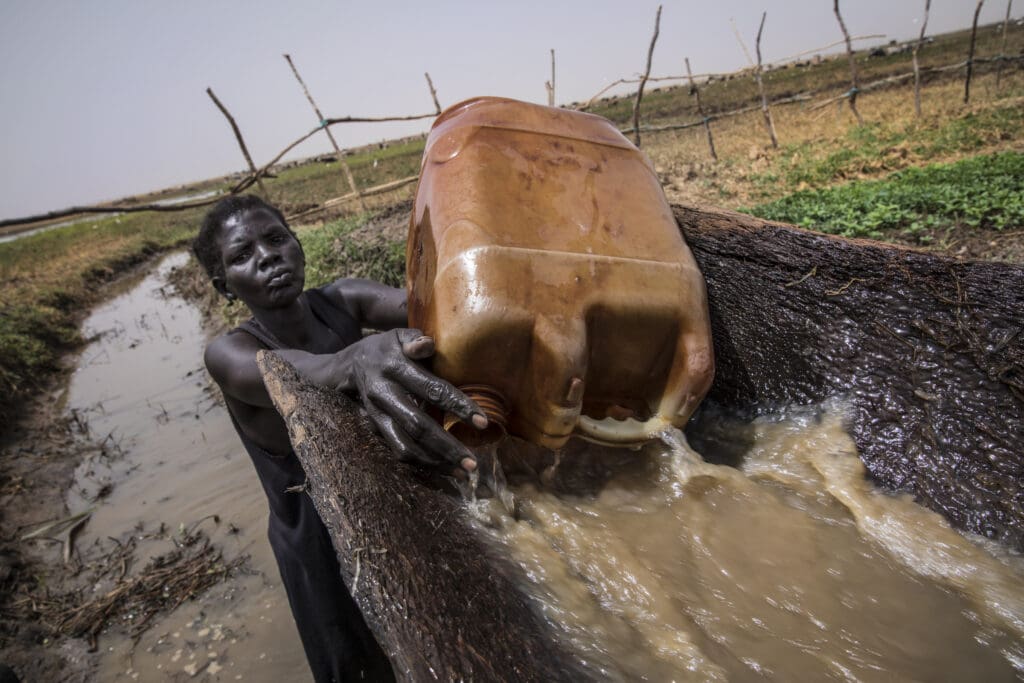
Across the globe, climate change is the second leading cause of hunger and is making it harder for families in the most vulnerable parts of the world to grow enough food. What’s worse is that eighty percent of the world’s food insecure population already lives in places prone to natural disasters and environmental degradation.
For people in Sub-Saharan Africa who are also facing conflict and high rates of poverty, extreme weather events are rapidly increasing hunger and malnourishment. From hurricanes and flooding to droughts and desertification, these stories collected from six African countries portray the very real, very human impacts of a warming world.
Madina Kaarsho
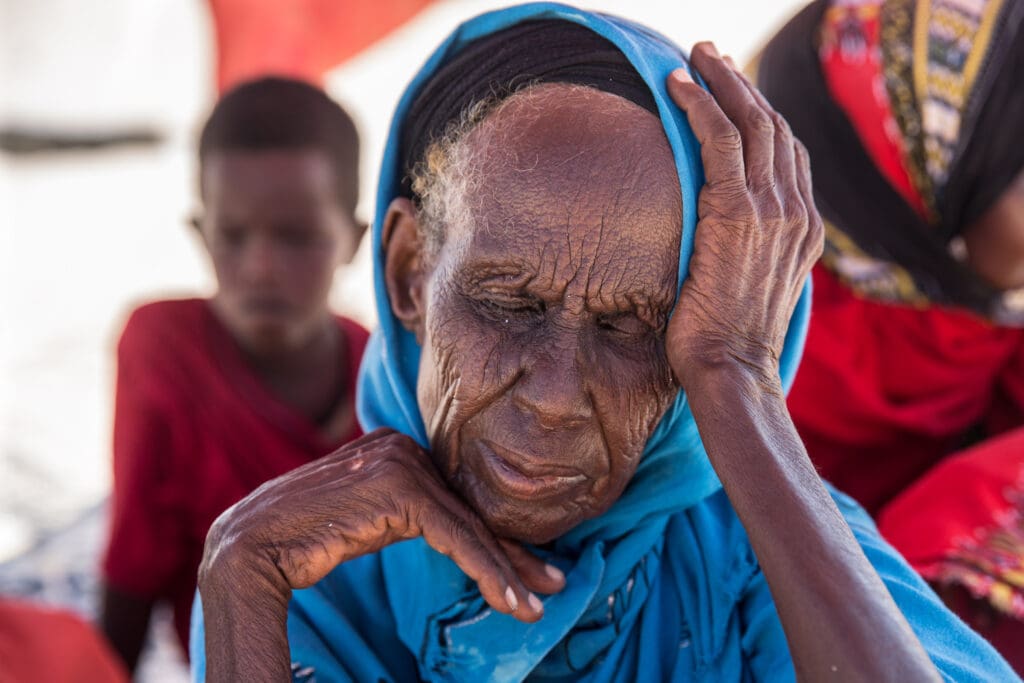
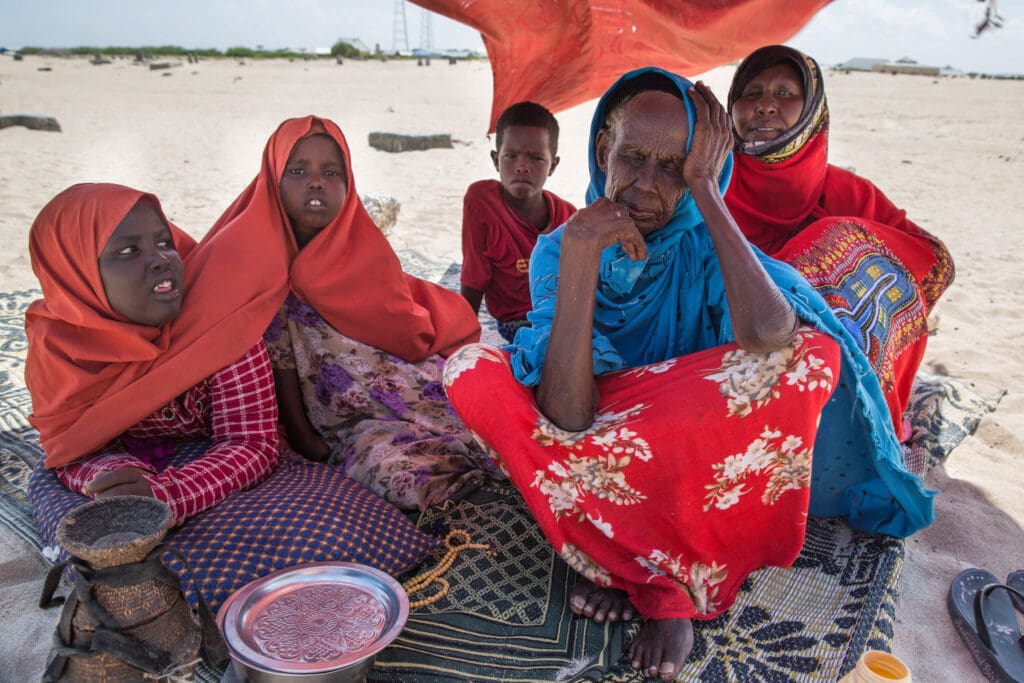
84-year-old Madina Kaarsho moved to Hobyo, Somalia from the neighboring town of Harardhere with her daughter Fatuma and her grandchildren hoping to escape drought. Madina suffers from poor eyesight that has gotten worse because of the reflection from the desert sand. After the last drought in 2017, Somalians are again enduring one of the driest seasons on record. WFP is providing food assistance to families like Madina’s to help them survive the extreme conditions.
Nishey Nuron

Nishey Mohamed Nuron comforts her granddaughter at her home in a camp for Internally Displaced Persons (IDPs) in Dolow, Somalia. The country is struggling to recover from decades of economic and political instability. Meanwhile, there are 2.6 million IDPs facing drought conditions and severe flooding. Climate change is both driving migration and exacerbating the displacement caused by conflict. By 2050, 150 million more people around the world could be displaced as a result of extreme weather.
Akon Garang and Agel Kuan
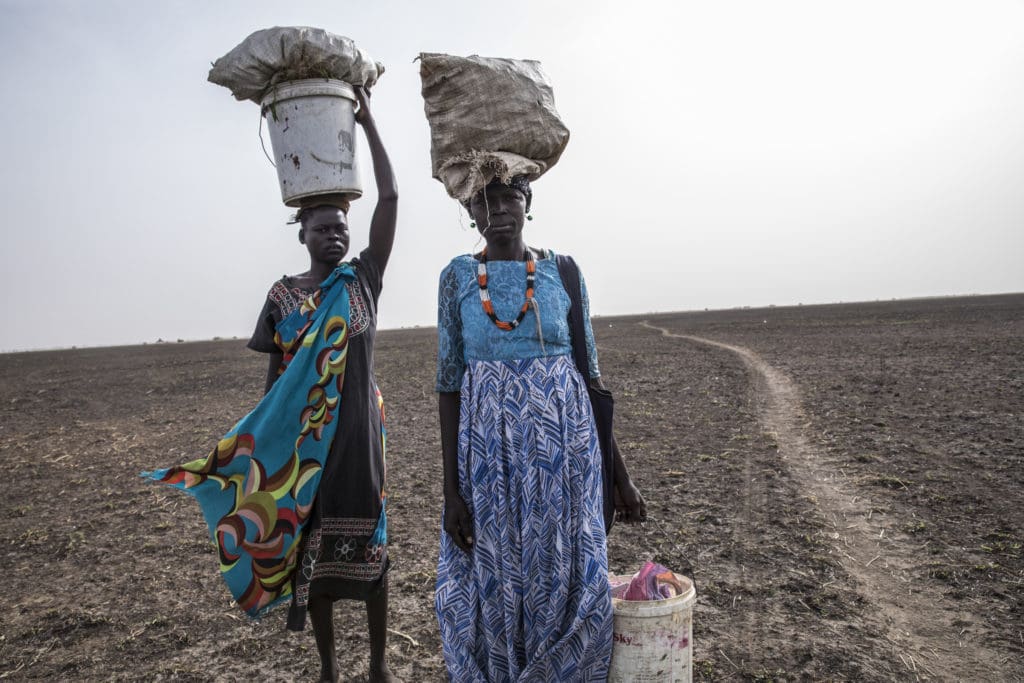 In South Sudan, with the dry earth stretched out behind them, Akon Garang and Agel Kuan are still managing to grow and sell crops from their garden in local markets. WFP’s Food for Assets program is providing food to hungry people in exchange for their work on community assets like roads, irrigation systems and sustainable gardens. The work is making food from local producers like Akon and Agel more available and accessible to people in the region.
In South Sudan, with the dry earth stretched out behind them, Akon Garang and Agel Kuan are still managing to grow and sell crops from their garden in local markets. WFP’s Food for Assets program is providing food to hungry people in exchange for their work on community assets like roads, irrigation systems and sustainable gardens. The work is making food from local producers like Akon and Agel more available and accessible to people in the region.
Adut Hol

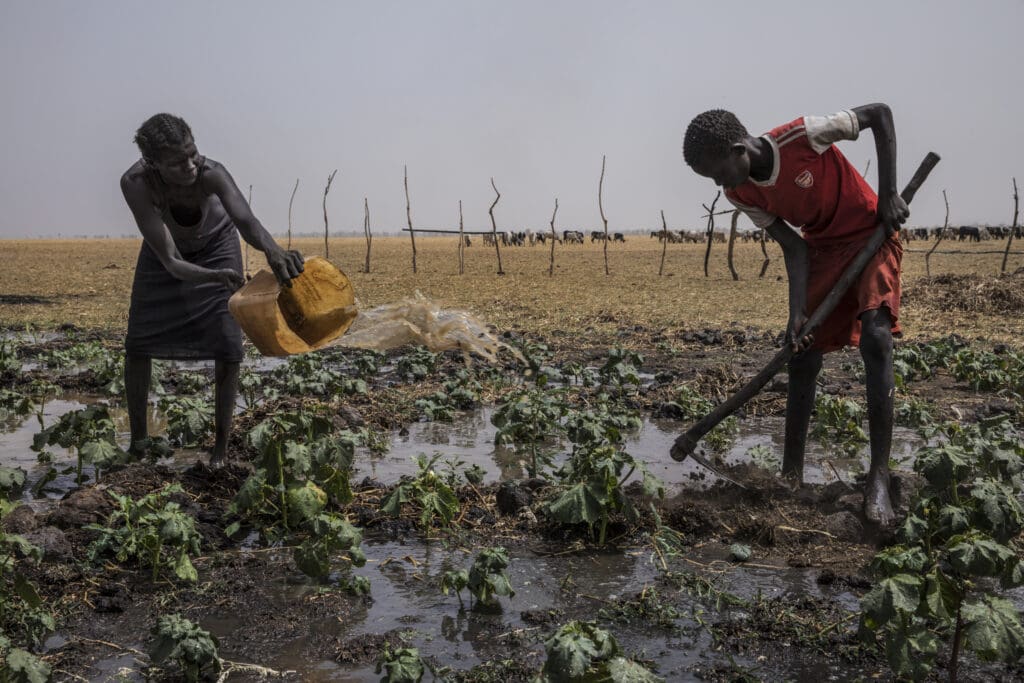
Adut Hol of South Sudan irrigates her vegetable garden – a product of her involvement in the Food for Assets program, which she graduated from after three years. It’s a tiny green oasis in an otherwise arid landscape. “The skills I learned in the program help me every day to sustain my family,” she says. “I work hard because this is my way to survive.” In 2018, the program equipped nearly 600,000 South Sudanese families with the tools they need to be resilient in the face of extreme weather.
Alice and Konforme
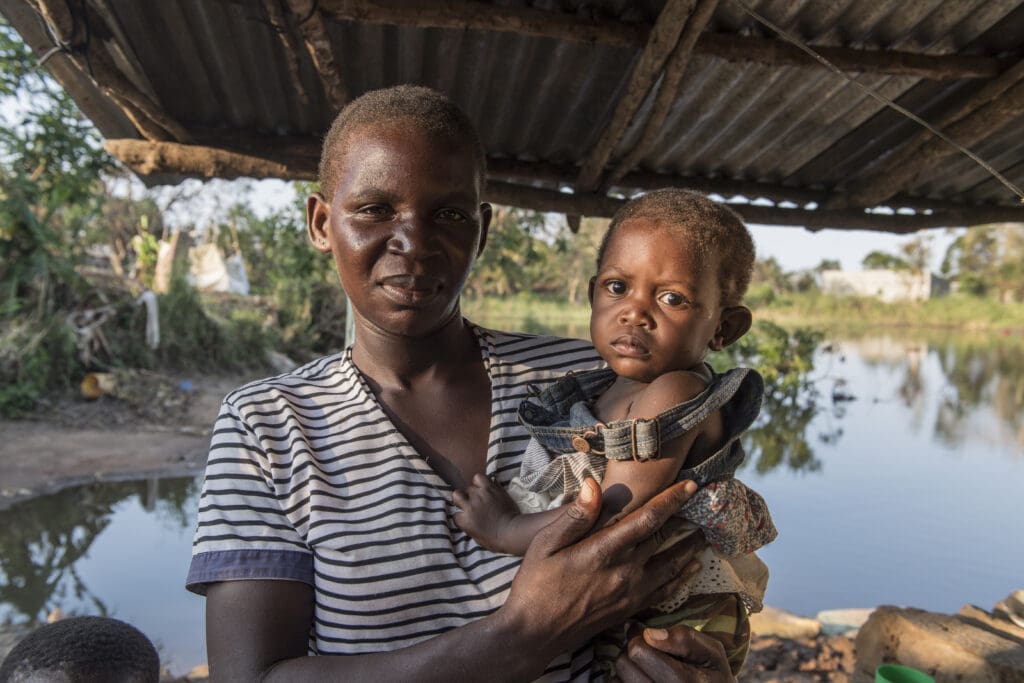
In March of 2019, Cyclone Idai made landfall in Mozambique, decimating homes and wreaking havoc on the lives of 1.85 million people. Alice and her husband Konforme, along with their children, were one of the many families that lost their home to the storm. “In my 38 years of life I have never seen a cyclone as strong as this,” said Konforme. Barely one month later, Cyclone Kenneth struck the already devastated country – a testament to the increasing frequency of extreme weather events around the world. WFP has been there since day one, providing food to 1.8 million people.
Michelle Chipare
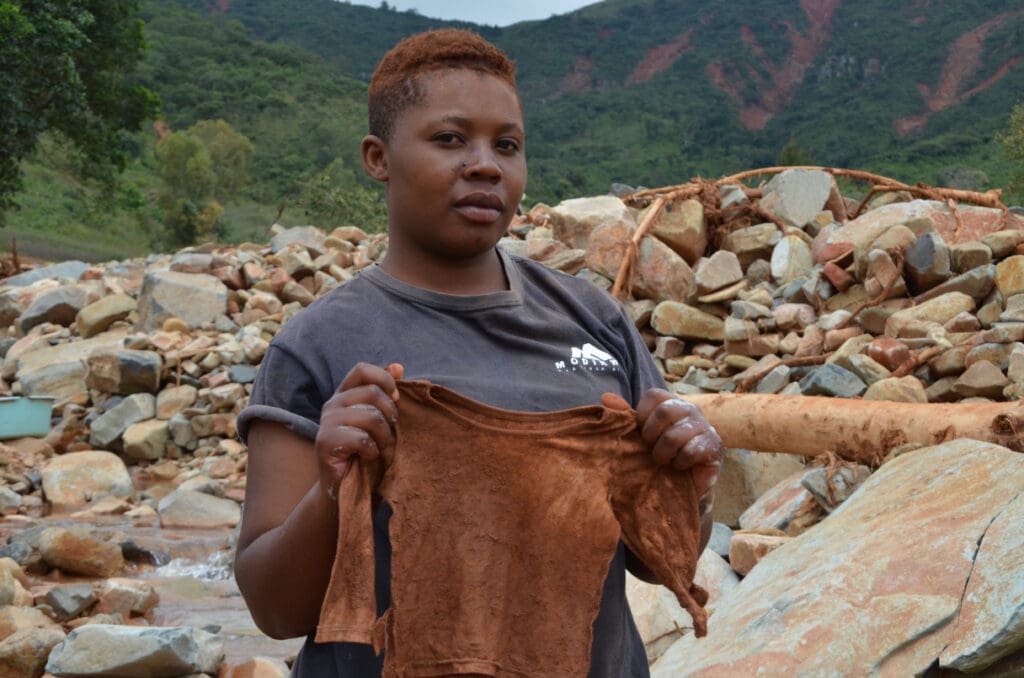
Cyclone Idai affected Zimbabwe too, causing a massive landslide in the town of Chimanimani. The next morning, Michelle Chipare discovered that her two-year-old daughter Brenda had died in the disaster. Climate-related disasters not only cause immediate devastation, they pose a long-term threat to the livelihoods of Zimbabweans like Michelle and Brenda. As eighty percent of the population relies on rain-fed agriculture for their food needs, adapting to extreme weather is a matter of life or death.
Kaka Abdou
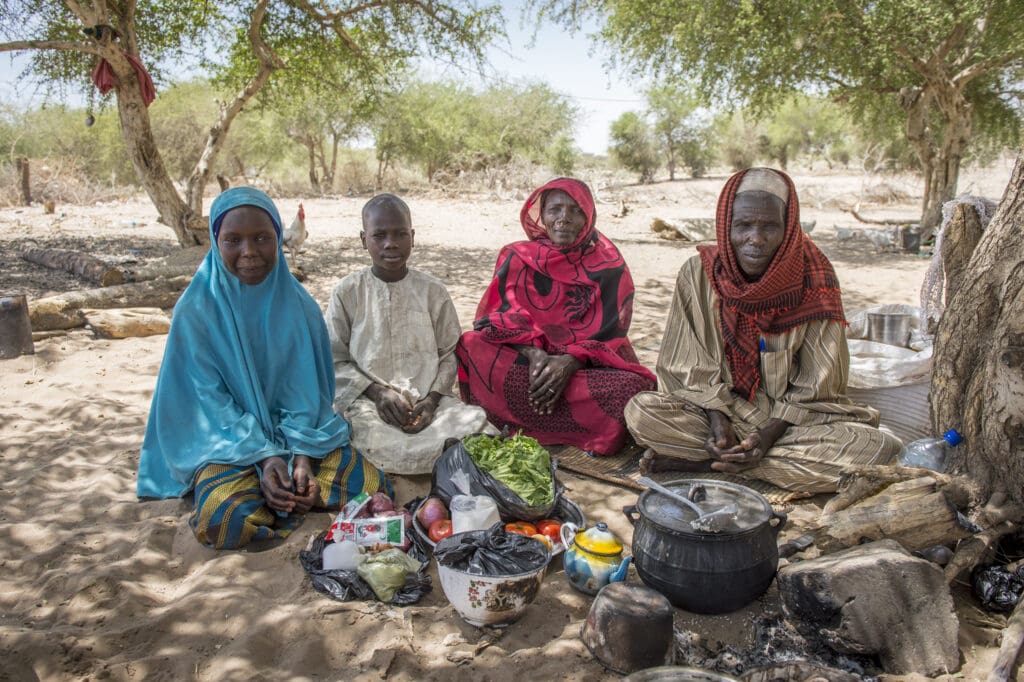
Kaka Abdou (left) along with her brother Brahim, mother Hawa, and father Abdou Ali fled their home in 2015 following attacks from Boko Haram. Kaka and her family now live in an IDP camp in the Lake Chad region where high temperatures have dried up 90 percent of the lake. Water scarcity resulting from desertification has exacerbated gender inequality, forcing women in families like Kaka’s to walk farther to collect water.
Ethiopia
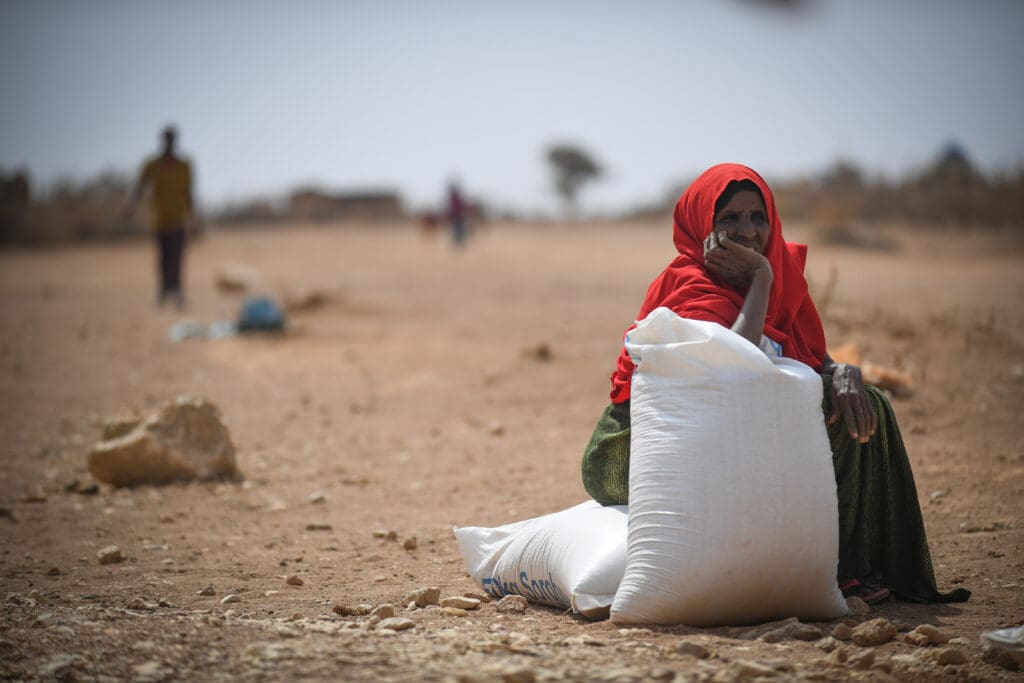
Erratic rainfall followed by severe flooding have wreaked havoc on the Somali Region of Ethiopia. Despite progress toward reducing poverty and malnourishment, climate change has been a key driver of hunger, and 1.8 million people are currently food insecure. WFP has provided immediate emergency food assistance and supported resilience building projects to help the people of Ethiopia cope with water shortages and loss of crops and livestock.
Extreme weather events are projected to force 122 million more people into hunger and poverty by 2030.
As the changing climate continues to alter weather patterns, WFP’s Food for Assets program, land rehabilitation projects and new farming technologies have equipped the most vulnerable people with the skills and tools needed to withstand climate-related shocks and stressors. This assistance plays a critical role in supporting the livelihoods of the most vulnerable people threatened by hunger.
With support from readers like you, WFP makes it possible for people like Michelle, Alice and Madina to feed themselves and their families, rain or shine.
Want more stats and stories? Visit our Climate Change & Hunger issue hub for videos, podcasts and interactive infographics.




